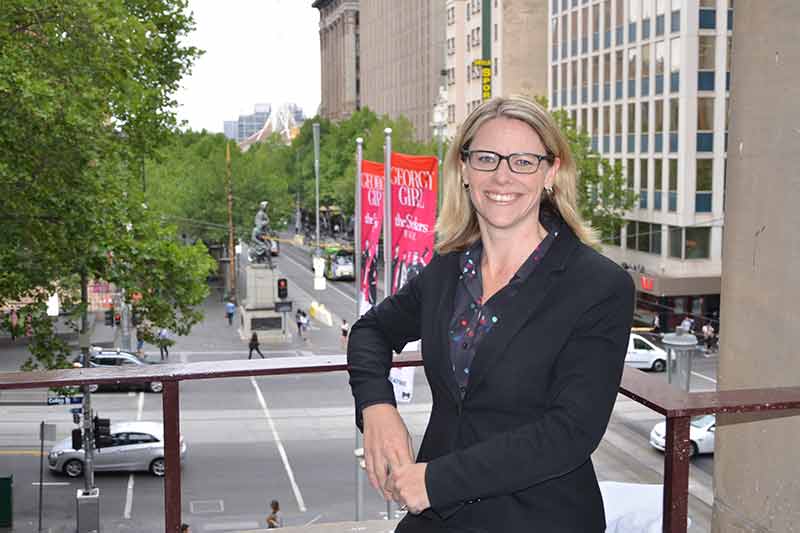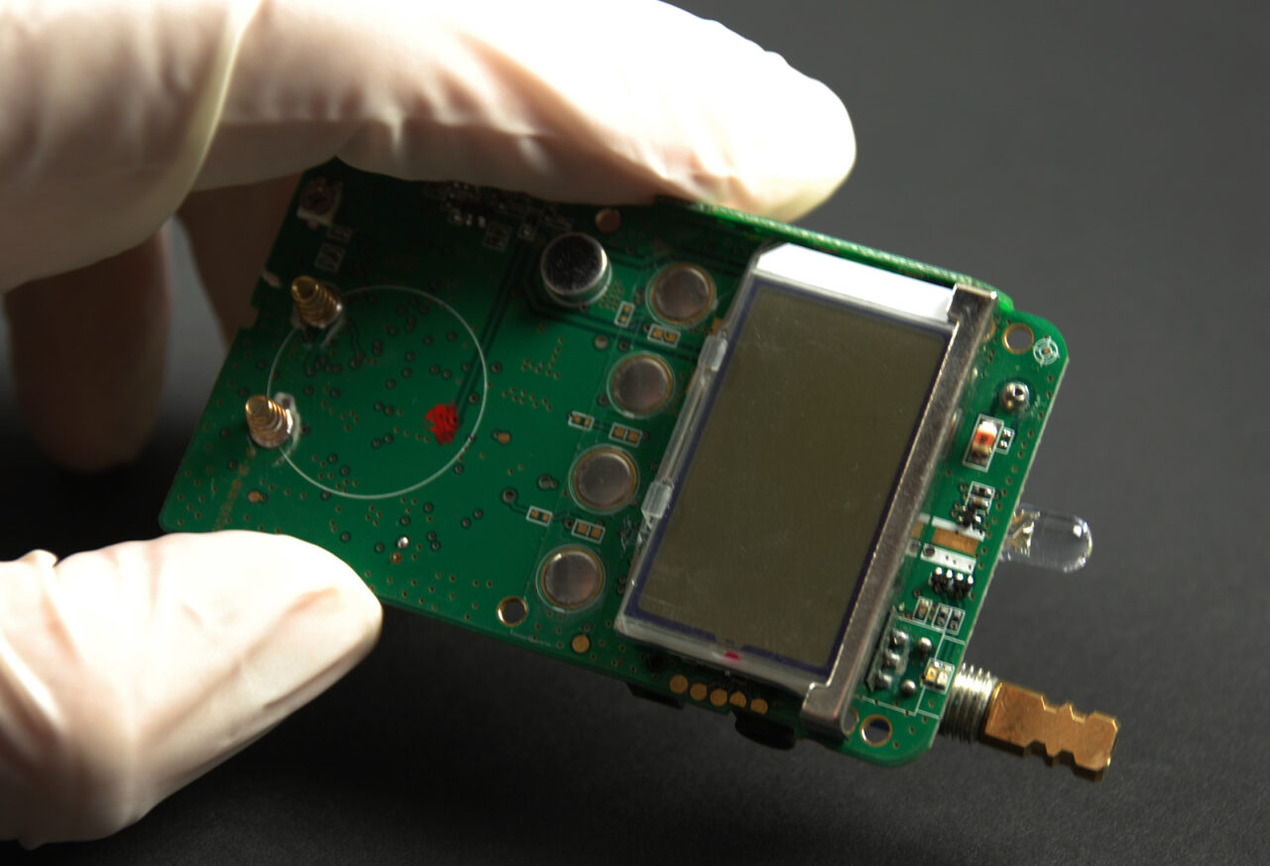
In your role, what are the key priorities you are focusing at the moment for the City of Melbourne?
Smart City is a term that has a lot of connotations. It means different things to different people. For the City of Melbourne, Smart City is about meaningfully connecting human experiences with physical surroundings, and digital systems which enhance Melbourne in every way.
It’s about connecting people with each other and their environment and investigating the role that technology plays in achieving that.
We tend to talk about technology last, for us it’s an enabler. First and foremost, we talk about the ‘people’ outcomes and ‘place’ outcomes that generate from Melbourne.
In that regard, how are you going about realising the goal of enabling the mobility and physical side of humans ‘going digital’ in Melbourne?
I’ve been in this role for nine months now, and I was very pleased to find Melbourne is not starting from a zero base when it comes to Smart City.
When I came on board, we already had sensors for our on-street parking and a pedestrian headcount system, which we use to help inform retailers about the optimal site for them in the city.
And we already had the open data platform which we’re very proud of. In 2014, we became Australia’s first government agency to launch an open data platform.
Interestingly, we already had email addresses for our trees; an initiative which sparked quite a bit of global media reporting about a year to 18 months ago.
Where that came from was that after a drought a few years ago, we recognised that our trees were community assets, particularly as they helped regulate the city’s temperature by creating shade, and thereby brought down the temperature. We’d made a very conscious effort to protect and actually increasing our tree coverage.
While mapping the trees, someone came up with the idea of giving them unique email addresses so people could report any concerns they had about individual trees. They did that, but they also sent notes to their favourites. Some came from homeless people who wrote things like, “Thank you for providing us comfort”, and tourists said, “Thank you providing with me with shade when I visited Melbourne.” Sometime, the trees wrote back.
That emotional connection is really important for Melbournians. We’re a very connected city. So, for me going forward, it’s about trying to get the right balance of the human – kind of quirky – personal aspect of ‘Smart’, with some of the practical layers such as parking technologies and so on.
We have some strong hypotheses in terms of where our Smart City approach will go.
At the moment we’re talking with the community, about how we achieve the right – ‘Smart’ – trade-off decisions to inform our work over the next few years.
That’s come from a lot of existing projects and strategies like the Future Melbourne 2026 Community Vision which will be launched soon. We’ve also recently worked on plans such as the Last Kilometre Freight, and strategies for cycling and environmental sustainability for Melbourne.
How do you store the data and are there plans for an analytics centre like the one in NSW?
We have a responsibility to ensure the right decisions are made for Melbourne. Decisions made for our city come from developers, different levels of government, infrastructure and utility companies, but it’s fair to say that in many cases, some made across that broad stakeholder group don’t always come from a common understanding.
We need to work towards developing a common understanding of issues.
That will take time and require a lot of collaboration, but that’s what our open data platform is about – developing, and using, a common source of ‘truth’ in the public domain.
In terms of how we are storing data, the City of Melbourne has a lot of data sets, but we are not the only the city’s only custodians of data.
If you look at Melbourne University and RMIT University, they occupy a relatively small amount of space, probably about one and a half square kilometres square, just north of the city. However, they have tens of thousands of students, academics and other workers who live and work in mini-cities.
They know about the people who come and go from their own precincts because their own Wi-Fi networks can provide a lot of information.
State government agencies, Public Transport Victoria and VicRoads, likewise, have a huge amount of data on the Victorian open data platform.
I don’t think we necessarily need one place for the data, but we need to have the data available and the right Application Program Interfaces (APIs) to bring it together.
In terms of your projects, how have they been funded?
Most of what we do in the City of Melbourne is funded by our ratepayers, which is why, for me, it is important to engage them and those who work in and visit the city.
How much collaboration is there between cities internationally? When you are talking about some of the projects we talked about earlier, do you look at what others are doing? How does Melbourne rate against some of the other cities?
There are a lot of passionate city enthusiasts out there, We all talk and support one another. In terms of how Melbourne fares, it’s really interesting.
Australians talk ourselves down a lot. We had the Smart Cities Summit in Melbourne in April and we’ve had a number of visitors from Boston out here. The feedback we’ve had from all those groups from Tel Aviv, Amsterdam, San Francisco and Boston was, “Wow, you guys are doing some great stuff” and “You guys are up there”.
As I said earlier we’re not starting from a zero base, there are a lot of opportunities and investment still to come to Melbourne.
For us, Smart City is about developing a distinctively Melbournian flavour. We don’t have a Harbour Bridge but we are Australia’s major financial, food, events arts and sporting capital.
What we need to do for Smart Cities is, as much as we can learn from the other cities, is for our beautiful city to be really distinctive.
How do you measure ROI from these projects and how do you judge whether if it’s been successful?
There are a few matrices we look at as a city. It’s everything from, ‘How many rough sleepers are there in the city on a given night?’ through to ‘How many people are coming into the city everyday who generate economic activity?’ or ‘The number and type of jobs we are creating in the city.’
For me, the ROI goes beyond those typical city matrices. There’s something here about how people feel about Melbourne and I don’t know if you can measure that.
Just as we have the title of the World’s Most Liveable City, I think we are also a very ‘lovable’ city. I don’t know how you measure love for a city.
I know that whenever I’m in a room with a group of Melbournians – whether they live in or near Melbourne or have come here to study, work or visit – there’s a real passion for our city. I don’t know how you measure that, but the ROI for me is as much about the things that you can’t measure as the things you can.
There’s a lot of focus on the human and the physical side, and technology is enabling that. Are there specific technologies that are central to you realising these goals?
In terms of your question about what underlying technologies, the IoT (internet of things) component is massive. Having parking sensors in just about every parking spot is moving us to a real-time system, which is really important data for us.
Keeping our on-street parking spaces moving is important for our local economy. People need to be confident that if they drive into the city, they will be able to find somewhere to park in a reasonable amount of time.
If we can do that, they will continue to come in and do their shopping, buy their coffee, attend appointments and lots of great things which activate the City’s economy.
Obviously we want to promote public transport use too, but some people choose the car, so that kind of parking technology allows us to keep Melbourne moving and make sure those parking spaces are available. That’s one example IoT is really important to us.
The Chief Digital Officer (CDO) is a fairly new position and in New South Wales, Damon Rees is the government’s CDO/CIO. How do you think the role of CDO will evolve over time?
Not all CDOs look the same in terms of their role mandates. In some industries, there’s a strong focus on social media and with others a strong focus is on omnichannel. In the City of Melbourne the CDO and Smart City lead role go hand-in-hand.
It’s almost like my job is to look into the future, work with my director and others, to look at what changes are coming, and decide what we need to do to future-proof the city. And there’s the technology side to it. In a sense I create the demand side and the CIO creates the fulfilment side, or the supply side.
It’s an evolving role. My mandate is about the city at large while the CIO role is about providing bespoke technology services at more of a virtual level.
This is a really exciting area for us. Cities are complicated and technology plays a critical role, but it’s not the only role.
Cities existed for thousands of years before the iPhone and other technologies came along. The core functions of cities haven’t really changed over time.
People come to cities to live, work, play. We’re keen to make sure technology investments for Melbourne are done with that in mind.
















